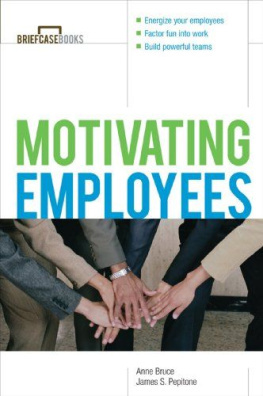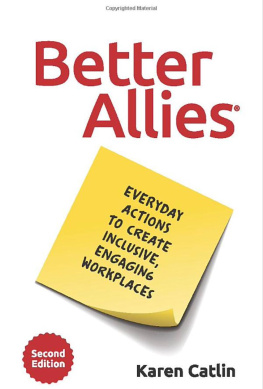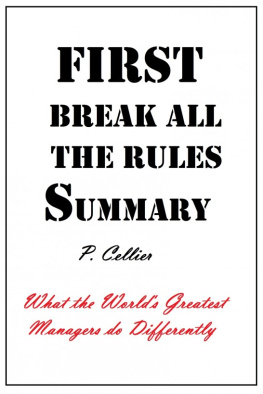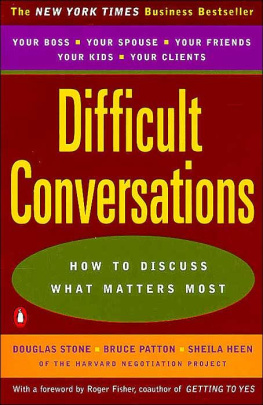Anne Bruce and James S. Pepitone have written a basic, hands-on book about motivating employees more effectively. They emphasize the need for your employees to become self-motivated, since only intrinsic motivation truly works. The book provides good, specific suggestions about ways to increase motivation. However, its core principles sound familiar - like material from an Organizational Behavior 101 textbook. Nonetheless, this book provides a good, easy-to-read summary of these fundamental ideas. getAbstract recommends this book to supervisors or managers who want to refresh their foundation in motivating employees, or to new managers who need to acquire this ability.
Summary
The Importance of Intrinsic Motivation
The key to motivating employees is understanding that people are motivated to do something by the belief that it is in their best interest. As a result, you cannot motivate someone else. You can only influence them once they become motivated. Thus, you have to improve your ability to influence your employees, so they feel motivated to do a good job. You can do this by helping them recognize how their welfare meshes with the organizations. Then, they will be naturally motivated to work hard - because they believe it is in their best interest. This relationship between influence, motivation, and hard work occurs because motivation is within each person or "intrinsic." People are motivated when they want to do something and, therefore, act to achieve that goal. While external factors may affect employees, these factors are always shaped by their personal intrinsic concerns. Employees have to "buy into" the extrinsic stimuli by linking it with their intrinsic concerns.
The Keys to Inspiring Intrinsic Motivation
Three basic motivational keys provide this intrinsic motivation in the workplace. The three "C" are collaboration, content, and choice. Collaboration is critical, because people are more motivated to work hard when they want to cooperate and help others succeed. Content is essential, because people feel more inspired to work hard when they recognize how their work adds value to the organization and contributes to their "work community." And, choice is necessary because people are eager to work harder when they "feel empowered to make decisions about their work." Thus, you want to create an environment in the workplace based on these principles, so employees feel motivated to work hard and well. You can accomplish this three key ways:
- Fear motivation - Fear motivates workers to work harder so they dont lose their jobs. This approach can work in the short-term, but it can result in less cooperation and communication, and result in anger and resentment.
- Incentive motivation - Incentives motivate employees to work hard for rewards. However, when you set up this expectation, workers can come to want even more rewards in the future.
- Personal growth motivation - This helps employees find more meaning and purpose in their work. It is really the best way to inspire long-term motivation.
Understanding the Basic Principles of Human Nature
The factors that motivate employees are rooted in basic principles of human nature, as described by authors Douglas McGregor and Abraham Maslow.
If you really want to influence peoples motivation, you have to uncover their reasons for doing things, their purposes, and their causes. People arent going to be truly motivated for your reasons and goals.
McGregor discusses his concept of Theory X and Theory Y in his book The Human Side of Enterprise published in 1960. He distinguishes between Theory X managers and Theory Y managers. Theory X managers base their management style on the assumption that work is "inherently distasteful." Theory X managers believe that most people are lazy, unambitious, and irresponsible. They prefer close supervision and are motivated primarily by money. By contrast, Theory Y managers assume that people really like their work, are committed to it, find recognition and self-fulfillment as important as money, like to express self-direction, and want responsibility. Theory X managers are more control-oriented and directive, while Theory Y are more empowerment-oriented and encourage people to be more creative and grow in their work. McGregors theory is useful for understanding different ways of interacting with employees and how they may respond.
People are motivated to do what they believe in is in their best interest.
Maslow bases his theory on the needs that motivate behavior. He proposes that people are motivated, first, by their fundamental physiological needs for food, shelter, water, and air. Next, they are motivated by the need for security and safety. At the third level, people are motivated by social needs, for instance, the need for belonging and respect. At the fourth level, people seek fulfillment of ego needs: self-esteem, status, and recognition. Finally, at the fifth level, self-actualization motivates people, who need to realize their "personal potential," and to become all they can be.
Your expectations affect the behavior of your employees. If you expect better performance and trust employees to deliver, youre likely to get it.
You should understand the different needs that drive different people. Each person is unique, with individual talents and skills. Learn by watching people work, talking to them, or doing employee surveys, so you can better meet the needs of different employees.
Encourage Entrepreneurial Thinking
Help employees think more like entrepreneurs. Explain the nature of the company and demonstrate how it functions and makes money. Help employees better understand the competition and encourage them to take intelligent risks. Inspire them to engage in "innovative thinking." As part of this empowerment process, support your employees if they make mistakes and treat errors as learning opportunities. You might set up special training programs or brainstorming sessions to teach your employees more about the company, to allow them to provide input in how it can improve, and to explore their ideas.
The Need to Link Motivation to Performance
Help your employees feel more motivated by linking motivation to performance. Build a connection between their interests and the organizations. Major ways you can help increase their employees performance include:












